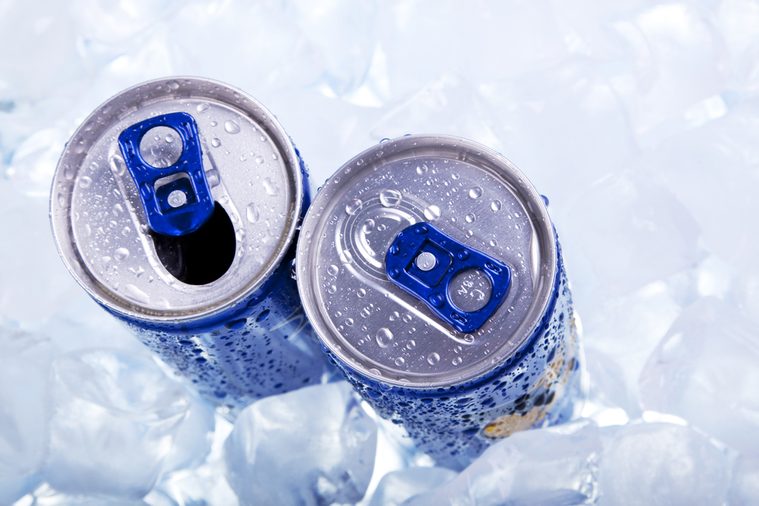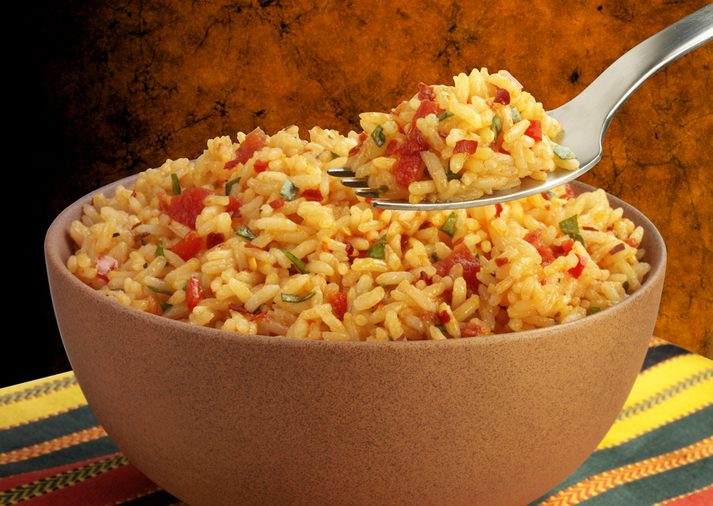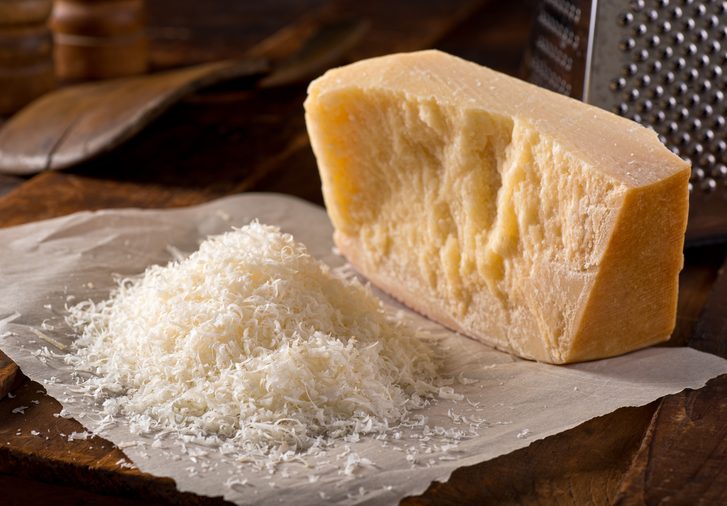
Parmigiano-Reggiano cheese
A few shavings of nice cheese on top of pasta or vegetables can take a simple dish from good to great—but you don’t have to fork out $22 a pound for the famous stuff. Instead, look for varieties like Pecorino Romano and SarVecchio, which offer the same flavor at half the price. You can also save some cash on groceries with these 19 tricks from frugal food shoppers.
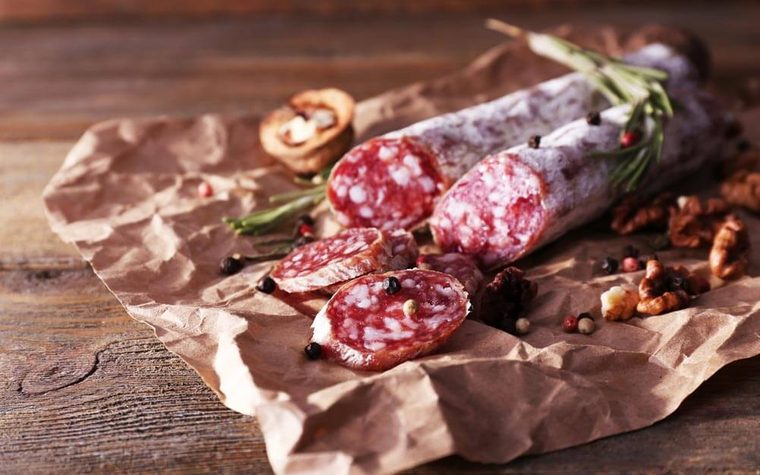
Smoked and cured meats
From fancy charcuterie to “dime a dog” night, pass on cured meats in any form—they’ve been linked to cancer, disease, high blood pressure, and migraines. And they’re packed with artery-clogging grease: regulations allow up to 50 percent (by weight) of fresh pork sausage to be fat. Plus, processed meats are one of the 13 foods cardiologists try to never eat.
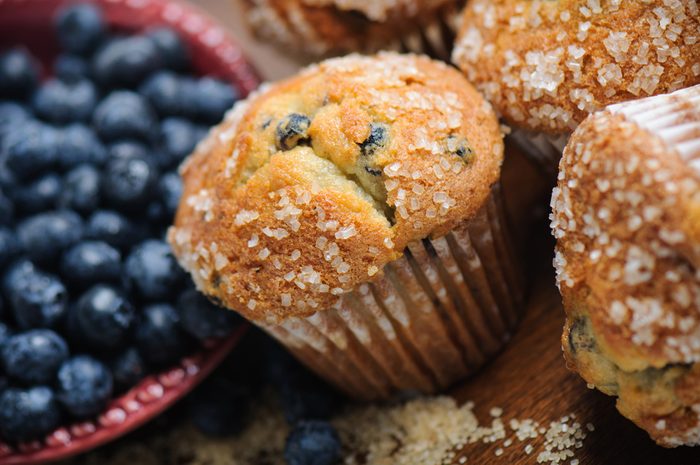
“Blueberry” items
Ahh, blueberries…now in everything from your breakfast cereal to muffins, granola bars, and sauces—or are they? Turns out that most of the blueberry-flavored items on grocery store shelves don’t feature a single actually berry, just artificial blueberry flavor. Buy your own berries and add them to plain cereal for a real health boost.
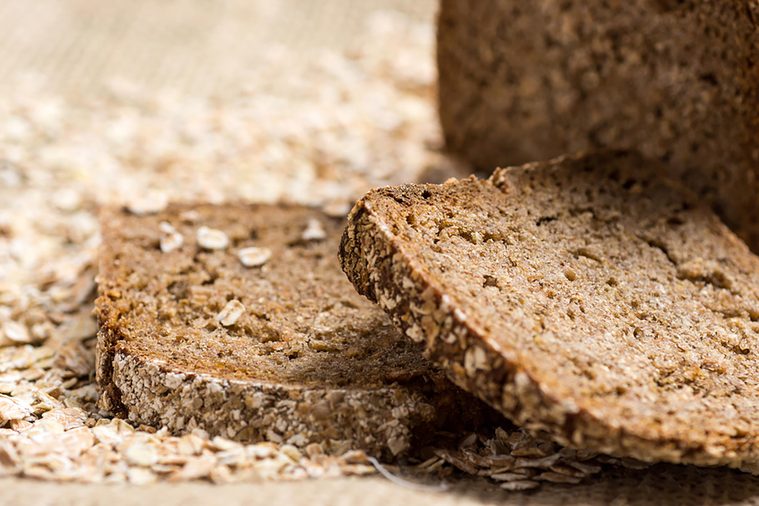
Multi-grain bread
This is junk food masquerading in a healthy disguise. Check the ingredient list to make sure whole wheat is the first, and main, ingredient—otherwise, you’re just getting a few grains mixed into regular white bread. Better yet, forgo the bread and enjoy straight-up barley, brown rice, quinoa, or steel-cut oats. Don’t let these 17 other surprisingly unhealthy foods trick you either.
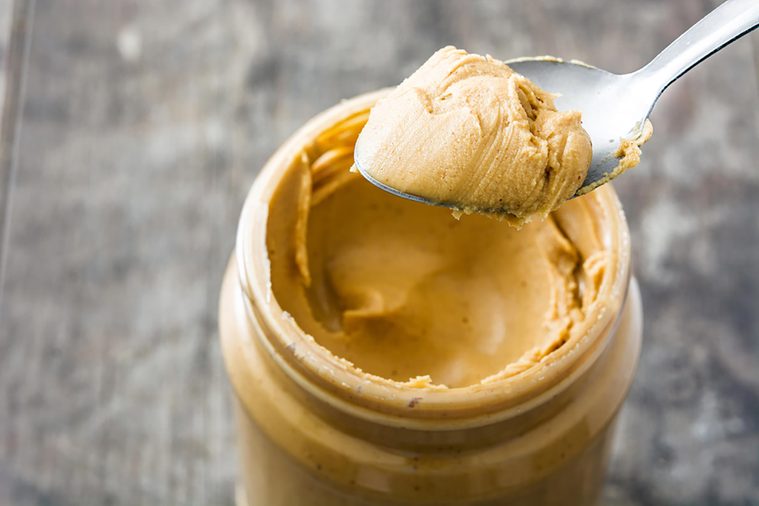
Reduced fat peanut butter
When companies take out the fat, they have to add something back in to make the food taste delicious. In this case, it’s lots of extra sugar—and who wants that? Instead, spread regular peanut butter on your sandwich for more of the good fats and protein without fake sweetness.
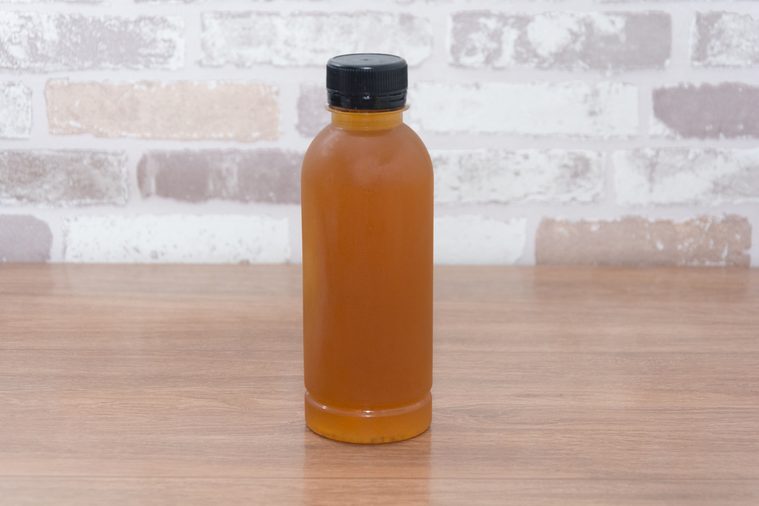
Bottled tea
Brew your iced tea at home and you’ll save both big bucks and your waistline—bottled teas can have more grams of sugar than a soda or slice of pie. Tea is just one of the 45 foods you’re buying that you can easily make at home.
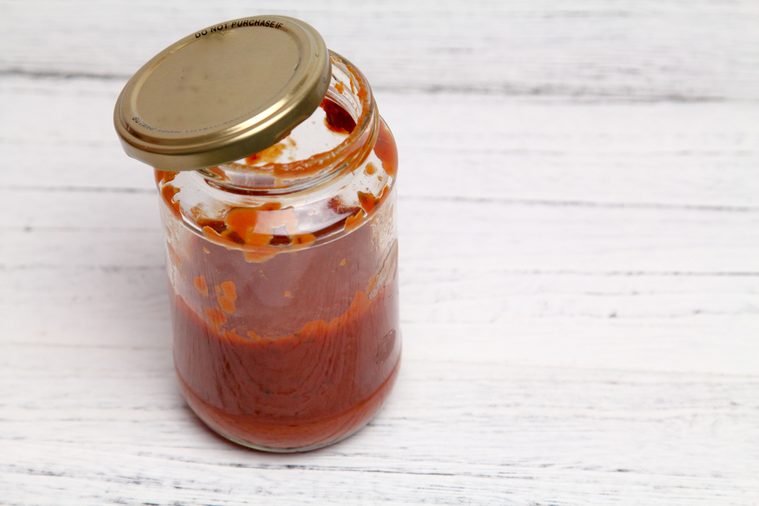
Tomato-based pasta sauces
A jar of spaghetti sauce typically runs $2 to $6. The equivalent amount of canned tomatoes is often under $1. Our suggestion: Make your own sauces from canned crushed tomatoes or fresh tomatoes — particularly in the summer, when they are plentiful, tasty, and cheap. The easiest method is to put crushed tomatoes (canned or fresh) into a skillet, stir in some wine or wine vinegar, a little sugar, your favorite herbs, and whatever chopped vegetables you like in your sauce — peppers, onions, mushrooms, even carrots — and let simmer for an hour. Adjust the flavorings and serve. Even easier: Coat fresh tomatoes and the top of a cooking sheet with olive oil and roast the tomatoes for 20 to 30 minutes at 425˚F before making your stovetop sauce.
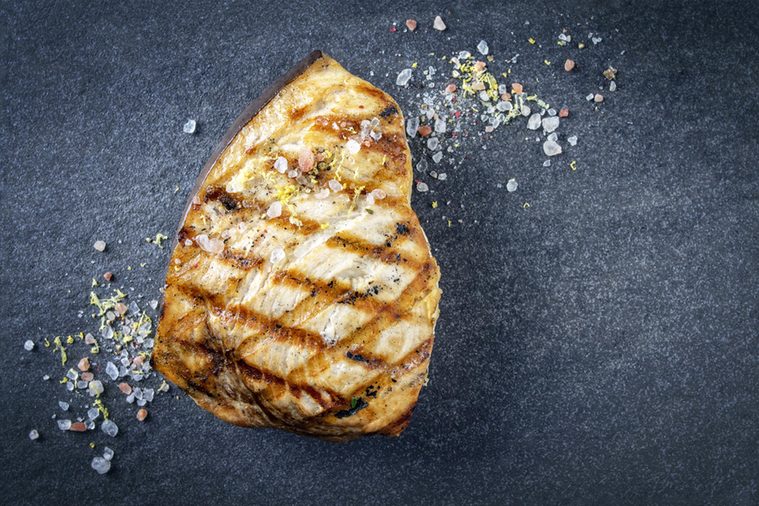
Swordfish
Large bottom-feeder fish, such as tuna, shark, king mackerel, tilefish, and especially swordfish are high in mercury. Choose smaller fish, like flounder, catfish, sardines, and salmon instead along with these other best fish to eat.
Energy drinks
Stick to a cup of coffee for your afternoon boost. Seemingly harmless caffeinated beverages are often sugar bombs—and the FDA has received numerous reports linking brands like 5 Hour Energy and Monster Energy to heart attacks, convulsion, and even death. These are the scary things that happen to your body when you drink energy drinks.
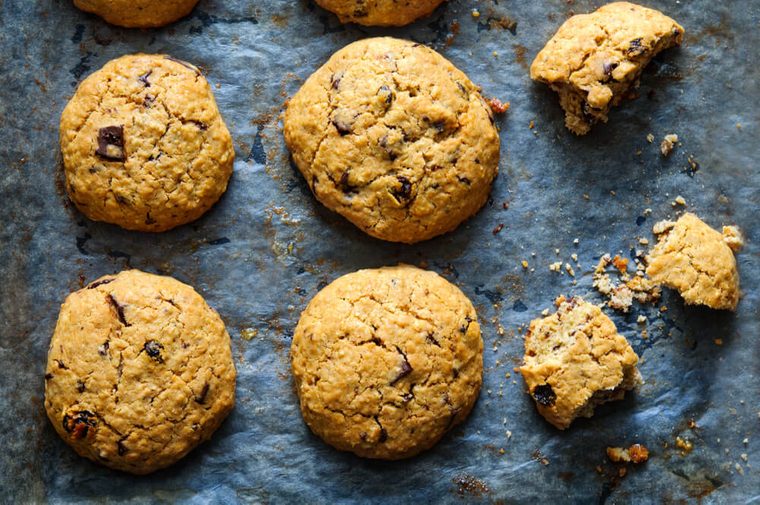
Gluten-free baked goods
If you aren’t diagnosed with celiac disease or a gluten intolerance, keep in mind that gluten-free doesn’t necessarily mean healthy—and gluten-free baked goods like bread, cookies, and crackers often are packed with more refined flours, artificial ingredients, and sugar than traditional baked goods. Plus, they can cost up to twice as much as you’d normally spend. On the other hand, here are some gluten-free foods that nutritionists love.
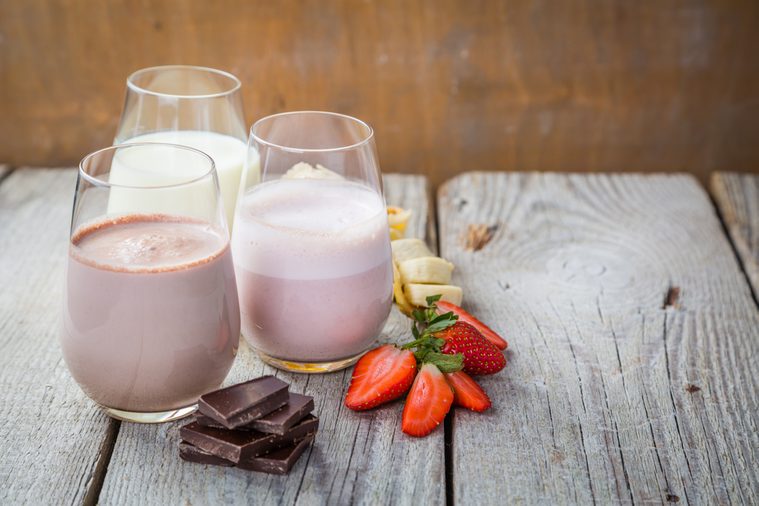
Flavored non-dairy milks
Vanilla-eggnog-caramel soy milk doesn’t win you any points in the health department—and it definitely won’t help your grocery receipt bottom line. If you prefer non-dairy milks for personal dietary reasons, buy unsweetened versions. And if you’re just trying to eat healthfully, skim milk should be just fine.
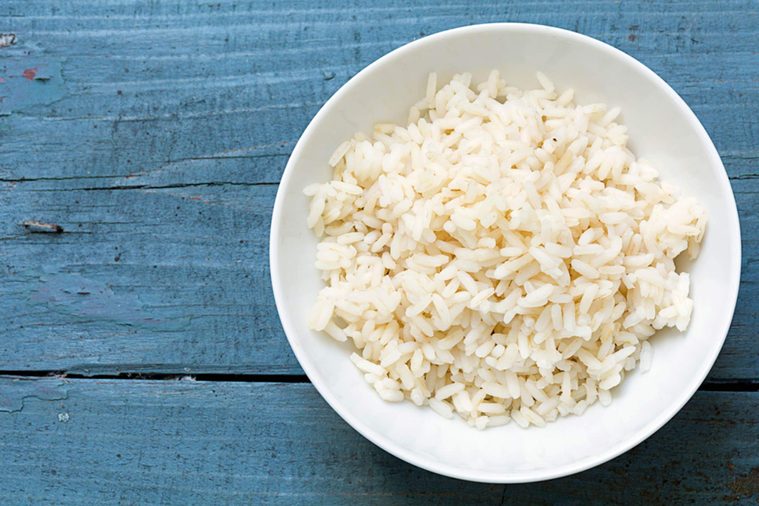
White rice
Skip the refined grains and go for whole: a 17 percent higher risk of diabetes is associated with eating five or more servings of white rice per week, compared to eating white rice less than once a month. That’s just one of the worst eating habits for diabetes.
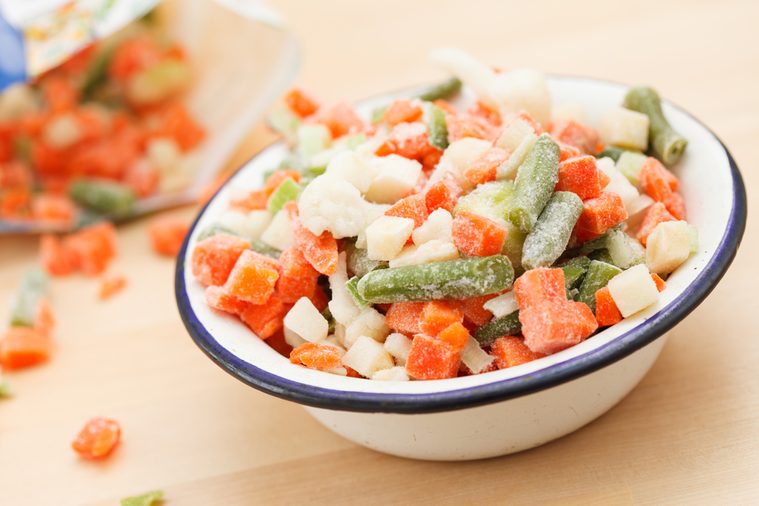
‘Gourmet’ frozen vegetables
Sure, you can buy an 8-ounce packet of peas in an herbed butter sauce, but why do so when you can make your own? Just cook the peas, add a pat of butter and sprinkle on some herbs that you already have on hand. The same thing goes for carrots with dill sauce and other gourmet veggies. Buying the plain version of any frozen veggies is still a good idea. So don’t let these 10 myths about frozen foods stop you from saving money and eating healthy.
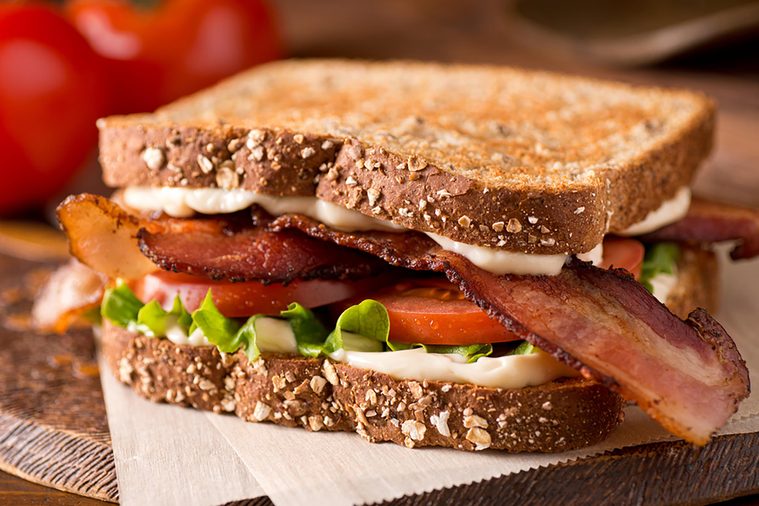
Microwave sandwiches
When you buy a pre-made sandwich, you’re really just paying for its elaborate packaging — plus a whole lot of salt, fat, and unnecessary additives. For the average cost of one of these babies ($2.50 to $3.00 per sandwich), you could make a bigger, better, and more nutritious version yourself.
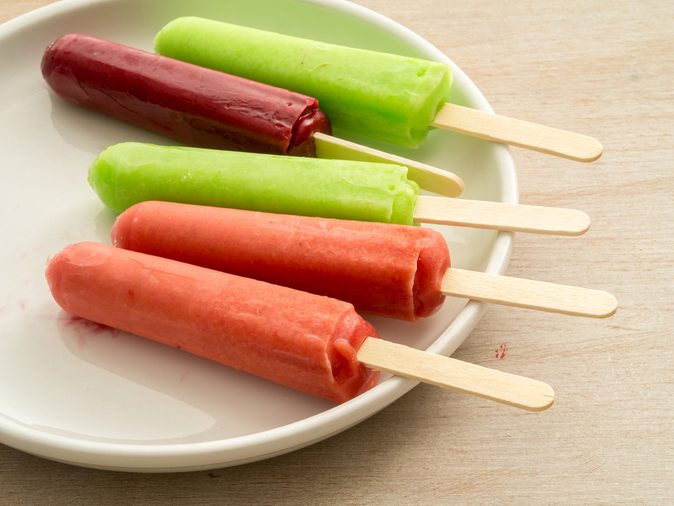
Premium frozen fruit bars
At nearly $2 per bar, frozen ‘all fruit’ or ‘fruit and juice’ bars may not be rich in calories, but they are certainly rich in price. Make your own at home — and get the flavors you want. To make four pops, just throw 2 cups cut-up fruit, 1 tablespoon sugar, and 1 teaspoon lemon or lime juice into a blender. Cover and blend until smooth. You might wish to add 1 to 2 tablespoons of water so the final mix is a thick slush. Pour into 4-ounce pop molds or paper cups, insert sticks, and freeze until solid.
Boxed rice ‘entree’ or side-dish mixes
These consist basically of rice, salt, and spices — yet they’re priced way beyond the ingredients sold individually. Yes, there are a few flavorings included, but they’re probably ones you have in your pantry already. Buy a bag of rice, measure out what you need, add your own herbs and other seasonings, and cook the rice according to package directions.
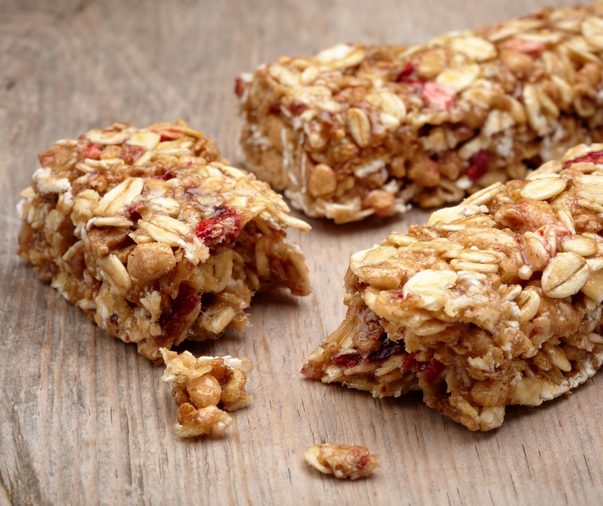
Energy or protein bars
These calorie-laden bars are usually stacked at the checkout counter because they depend on impulse buyers who grab them, thinking they are more wholesome than a candy bar. Unfortunately, they can have very high fat and sugar contents and are often as caloric as a regular candy bar. They’re also two to three times more expensive than a candy bar. If you need a boost, a vitamin-rich piece of fruit, a yogurt, or a small handful of nuts is more satiating and less expensive. Or add these other, healthier energy-boosting foods to your diet.
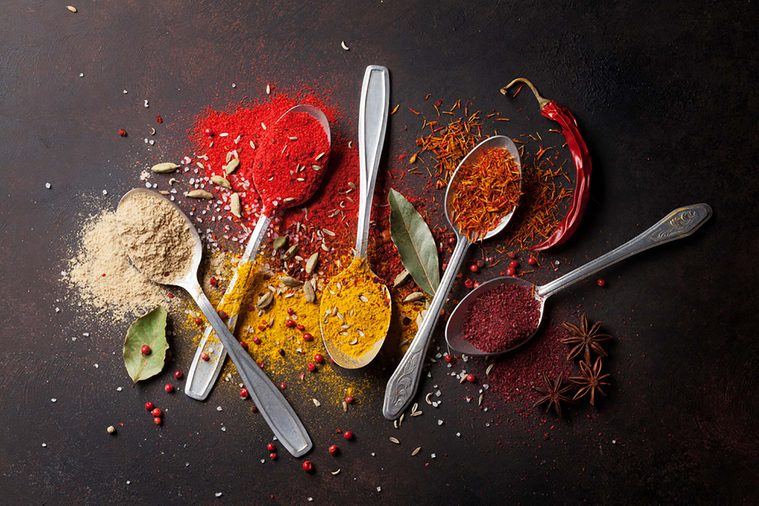
Spice mixes
Spice mixes like grill seasoning and rib rubs might seem like a good buy because they contain a lot of spices that you would have to buy individually. Check the label first: We predict the first ingredient you will see on the package is salt, followed by the vague ‘herbs and spices.’ Look in your own pantry, and you’ll probably be surprised to discover just how many herbs you already have on hand, and you can improvise as much as you want. Keep an eye out especially for these herbs and spices that are great for brain health.
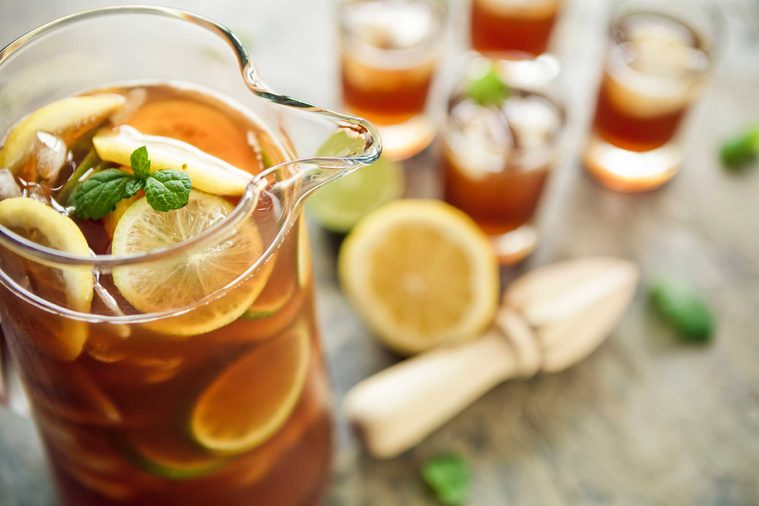
Powdered iced tea mixes or prepared flavored iced tea
Powdered and gourmet iced teas are really a rip-off! It’s much cheaper to make your own iced tea from actual (inexpensive) tea bags and keep a jug in the fridge. Plus, many mixes and preparations are loaded with high fructose corn syrup and other sugars, along with artificial flavors. To make 32 ounces of iced tea, it usually takes 8 bags of black tea or 10 bags of herbal, green, or white tea. If you like your tea sweet but want to keep calories down, skip the sugar and add fruit juice instead.
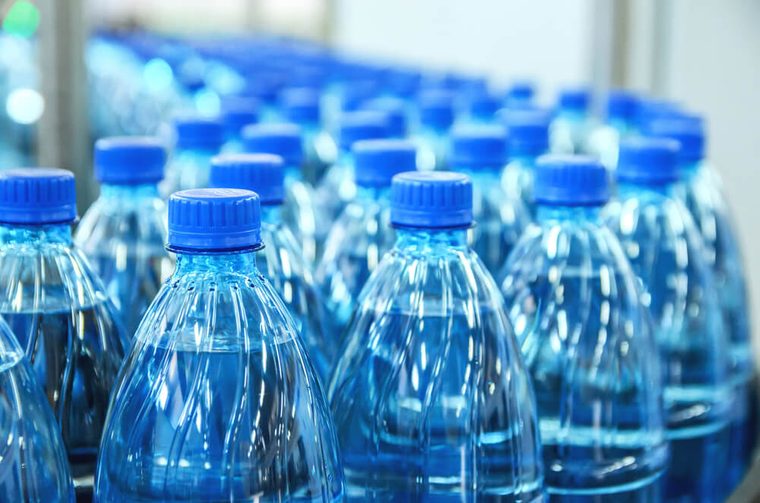
Bottled water
Bottled water is a bad investment for so many reasons. It’s expensive compared to what’s coming out of the tap, its cost to the environment is high (it takes a lot of fossil fuel to produce and ship all those bottles), and it’s not even better for your health than the stuff running down your drain.
Even taking into account the cost of filters, water from home is still much cheaper than bottled water, which can run up to $1 to $3 a pop.
If you have well water and it really does not taste good (even with help from a filter), or if you have a baby at home who is bottle-fed and needs to drink safe water, buy jugs of distilled or ‘nursery’ water at big discount stores. They usually cost between 79 cents and 99 cents for 1 gallon (as opposed to $1.50 for 8 ounces of ‘designer’ water). And you can reuse the jugs to store homemade iced tea, flavored waters, or, when their tops are cut off, all sorts of household odds and ends. If you are going to stick with bottled water, these are the only kinds you should be buying.
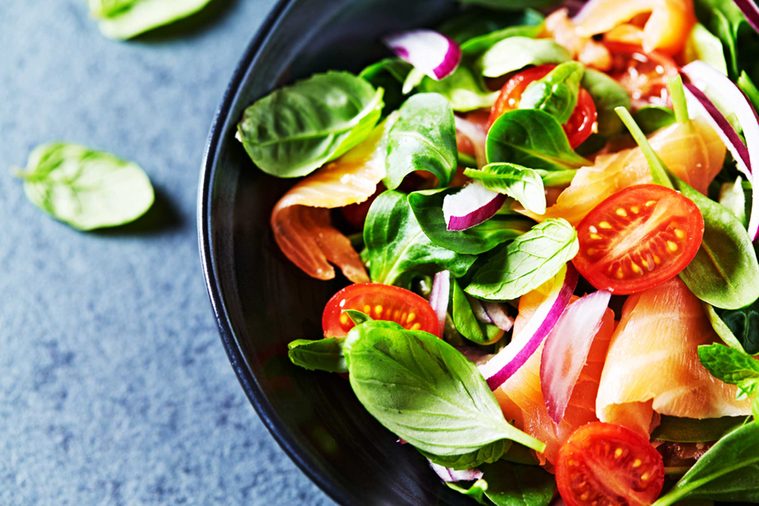
Salad kits
Washed and bagged greens can be a time-saver, but they can cost three times as much as buying the same amount of a head of lettuce. Even more expensive are ‘salad kits,’ where you get some greens, a small bag of dressing, and a small bag of croutons. Skip these altogether. Make your own croutons by toasting cut-up stale bread you would otherwise toss, and try mixing your own salad dressing. Salads don’t have to be sad or boring, especially if you give these healthy, exciting salad recipes a try.
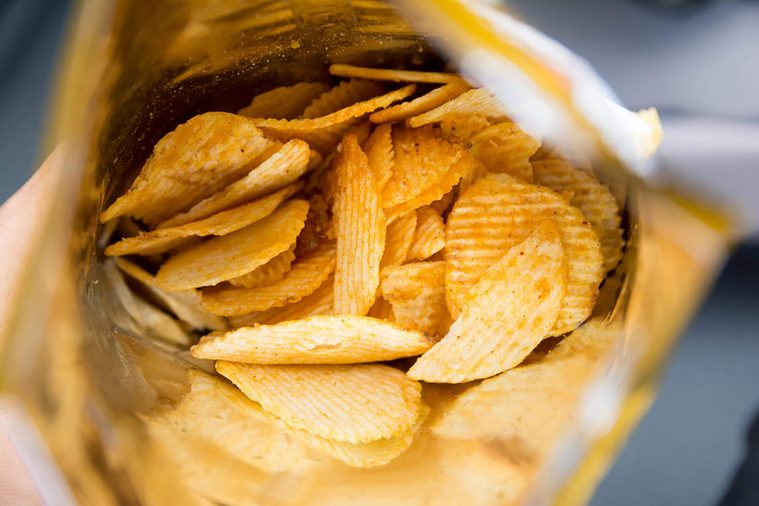
Individual servings of anything
The recent trend to package small quantities into 100-calorie snack packs is a way for food-makers to get more money from unsuspecting consumers. The price ‘per unit’ cost of these items is significantly more than if you had just bought one big box of cheese crackers or bag of chips. This is exactly what you should do. Buy the big box and then parcel out single servings and store them in small, reusable storage bags. Want more grocery shopping tips? These 29 things grocers won’t tell you could change your shopping and eating habits.
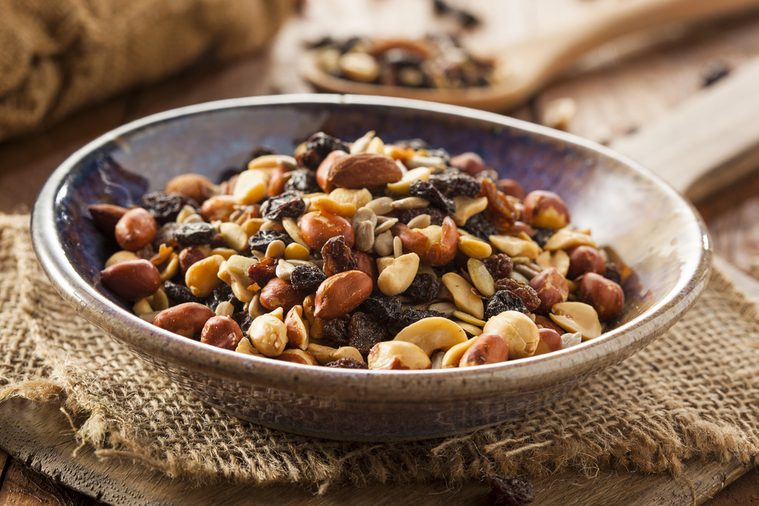
Trail mix
We checked unit prices of those small bags of trail mix hanging in the candy aisle not that long ago and were shocked to find that they cost about $10 a pound! Make your own for much, much less with a 1-pound can of dry roasted peanuts, 1 cup of raisins, and a handful of almonds, dried fruit, and candy coated chocolate. The best part about making your own? You only include the things you like. Keep the mixture in a plastic or glass container with a tight lid for up to 3 weeks. Give these healthy trail mix recipes a try.
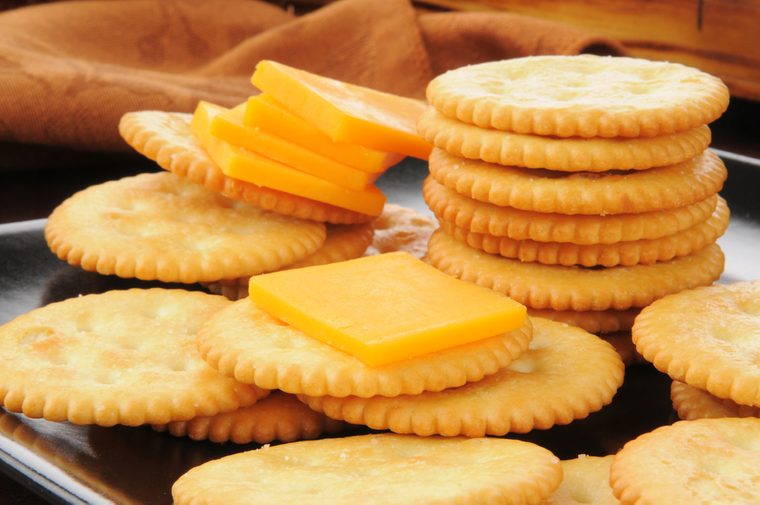
‘Snack’ or ‘lunch’ packs
These ‘all-inclusive’ food trays might seem reasonably priced (from $2.50 to $4.00), but you’re actually paying for the highly designed label, wrapper, and specially molded tray. They only contain a few crackers and small pieces of cheese and lunchmeat. The actual edible ingredients are worth just pennies and are filled with salt. Instead, opt for these healthy snacks you don’t need to feel guilty about eating.
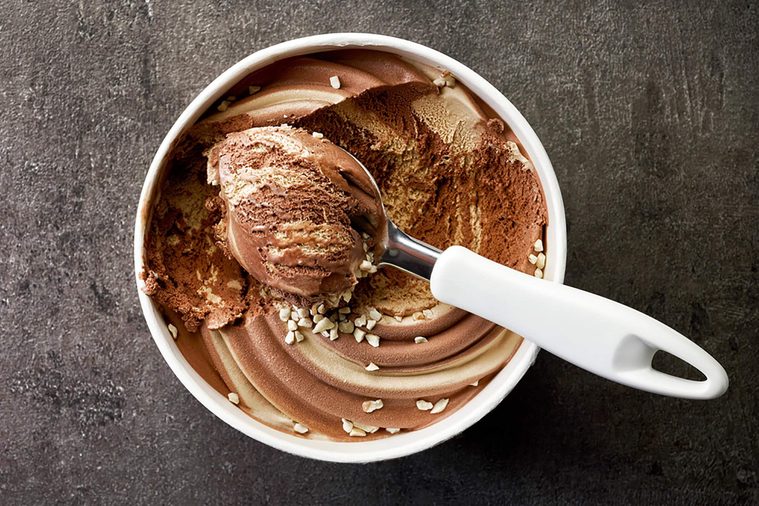
Gourmet ice cream
It’s painful to watch someone actually pay $6 for a gallon of designer brand ice cream. Don’t bother. There’s usually at least one brand or other on sale, and you can easily dress up store brands with your own additives like chunky bits of chocolate or crushed cookie. If you do like the premium brands, wait for that 3-week sales cycle to kick in and stock up when your favorite flavor is discounted.
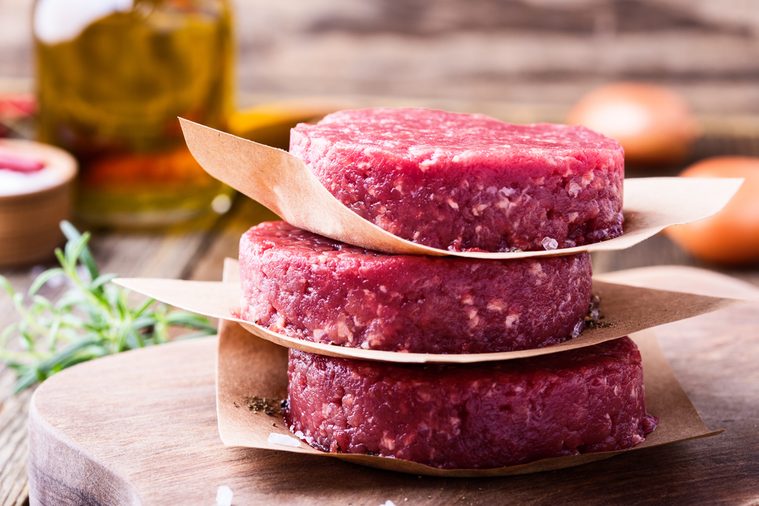
Pre-formed meat patties
Frozen burgers, beef or otherwise, are more expensive than buying the ground meat in bulk and making patties yourself. We timed it — it takes less than 10 seconds to form a flat circle and throw it on the grill. Also, there’s some evidence that pre-formed meat patties might contain more e. coli than regular ground meat. In fact, most of the recent beef recalls have involved pre-made frozen beef patties. Now that you’ve crossed these items off your grocery list, cross off these foods nutritionists never eat (so you shouldn’t either), too.
